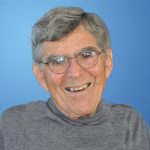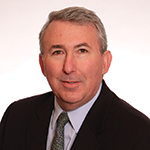When he went into practice, Dr. Kaplan serendipitously landed in Denver, where Charley Smyth, MD, one of the field’s founders, had established a division of rheumatology at the University of Colorado. Making rounds each Tuesday morning with Dr. Smyth, Dr. Kaplan became what he calls “an on-the-job-trained rheumatologist,” and on Dr. Smyth’s recommendation, took the specialty exam the first time it was administered in 1972.
One of Dr. Kaplan’s first achievements with the ACR was to arrange bus transportation and hotel facilities when Denver hosted the then-ARA annual meeting in 1965. As his association with the ARA grew, three themes dominated Dr. Kaplan’s active involvement: promoting awareness of the specialty, fostering unity among the ACR’s stakeholders, and building the workforce.
Early Origins and Development of the ACR
The modern rheumatology movement began in 1925 at a Paris meeting when the International Society of Medical Hydrology appointed an International Committee on Rheumatism, which later became the International League Against Rheumatism (ILAR). Three years later, in 1928, the American Committee for the Control of Rheumatism was founded. The ACR traces its official beginnings to the American Rheumatism Association for the Study and Control of Rheumatic Diseases, which sponsored the Third Conference on Rheumatic Diseases and held its first formal business meeting in Cleveland in June, 1934. That program listed 11 papers. The organization later shortened its name to the American Rheumatism Association in 1937, and helped to sponsor the incorporation of the Arthritis and Rheumatism Foundation (the precursor to the Arthritis Foundation) in 1948. In 1965, the ARA merged with the AF and continued to function as the American Rheumatism Association Section of the AF while retaining its independent internal organization and management. In 1986, the ARA ended its association as a Section of the AF, and became the ACR in 1988. Finally, the Arthritis Health Professionals Association, which had also been a section of the AF, joined with the ACR in January 1994, taking the new name of the Association of Rheumatology Health Professionals.
Sources:
- History of the ACR. Available on line at www.rheumatology.org/about/history/index.asp. Last accessed September 16, 2009.
- Klippel JH, Ed. Primer on the Rheumatic Diseases, 11th Ed. Arthritis Foundation; Atlanta Georgia. 1997.
Not Just a Heberden’s Node
Dr. Kaplan recalls one particularly memorable meeting during his early involvement with the ACR’s lobbying committee. He and his colleagues had arranged to meet with a Colorado senator to talk about funding needs in arthritis research. “Oh, I know all about arthritis!” exclaimed the senator, holding up a finger with a Heberden’s node to show them. “This was his notion, as a knowledgeable senator, of what he thought bad arthritis was,” notes Dr. Kaplan wryly.

